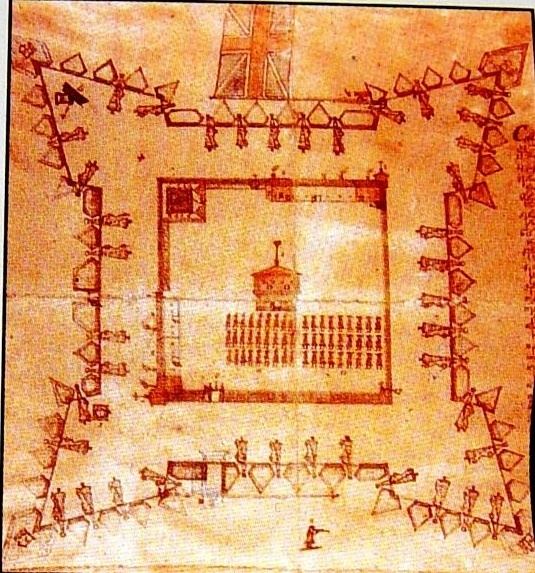 | ||
Similar Fort Edward, Fort Anne, Fortress of Louisbourg | ||
Fort William Augustus (also known as Grassy Island Fort, Fort Phillips) was a British fort built on Grassy Island off of Canso, Nova Scotia during the lead up to Father Rale's War (1720). In the wake of The Squirrel Affair and the British attack on Fort St. Louis (at present-day Guysborough), Cyprian Southack urged Governor Richard Philipps to build the fort. The Fort was named after King George's son Prince William, Duke of Cumberland.
Contents
Construction
On August 7, 1720, 60–75 Mi'kmaq joined French Fishermen from Petit de Grats and attacked Fort William Augustus (also known as Fort Phillips, after the Governor of Nova Scotia Richard Philipps) as it was being built. The Mi'kmaq killed three men, wounded four, and caused significant damage. The New Englanders took 21 prisoners which they transported to Annapolis Royal. This raid on Canso was significant because of the involvement of the Mi'kmaq and was significant in leading to Father Rale's War.
In the fall of 1720, the New Englanders built a fort named Fort Phillips, after the Governor of Nova Scotia Richard Philipps. Construction of such a permanent facility was a violation of long-standing agreements between the Mi'kmaq and the fishermen. This significant violation helped precipate Father Rale's War.
In 1721, Governor of Massachusetts took proprietarial attitude toward the Canso fisheries and sent the HMS Seahorse to patrol the waters off Nova Scotia. With the arrival of British troops, the Mi'kmaq were discouraged from attacking until the following year. The HMS Seahorse was replaced in 1721 by a New England vessel, the William Augustus under the command of Southack.
Father Rale's War
On 23 July 1723, the village was raided again by the Mi'kmaq and they killed three men, a woman and a child. In this same year, the New Englanders built a twelve-gun blockhouse to guard the village and fishery.
In 1725, sixty Abenakis and Mi'kmaq launched another attack on Canso, destroying two houses and killing six people.
King George's War
Edward How constructed a blockhouse and rebuilt other structures in the 1730s. The French and Mi'kmaq destroyed the fort in the Raid on Canso during King George's War (1744). The area was used to stage of the Siege of Louisbourg (1745).
Grassy Island Fort National Historic Site of Canada
Grassy Island Fort was recognized as a National Historic Site of Canada in 1962. There are remains of the 1720 redoubt, 1723–24 fort, and the 1735 blockhouse.
